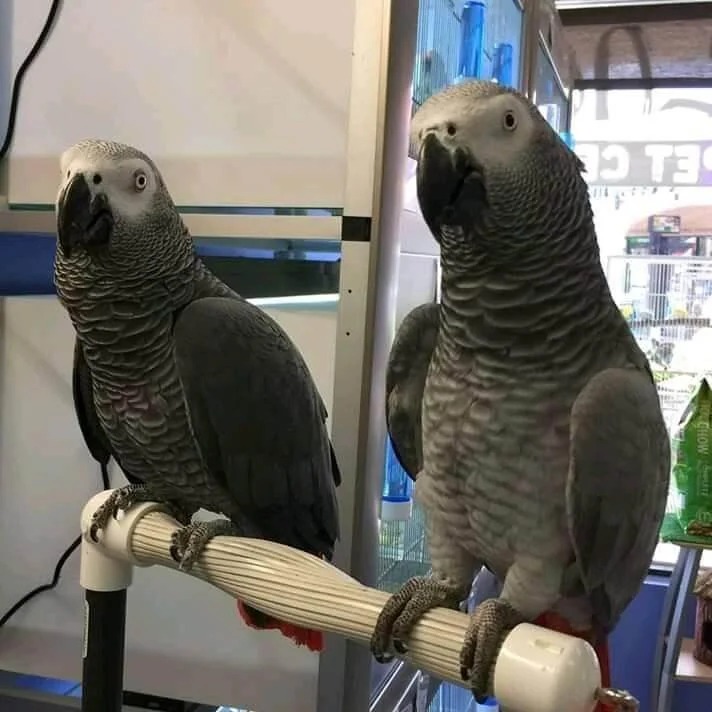The 10 Scariest Things About Caring For An Grey Parrot
페이지 정보

본문

Caring for a Grey Parrot: A Comprehensive Guide
Grey parrots, particularly alex the african grey parrot African Grey Parrot for Sale Grey parrot, are renowned caring for an grey parrot their intelligence, social nature, and distinctive ability to imitate human speech. These captivating birds make wonderful buddies for those who understand their specific requirements. The following guide highlights the vital elements of taking care of a grey parrot, covering everything from environment and diet plan to psychological stimulation and health care.
Introduction of Grey Parrots
Grey parrots are native to the jungles of West Africa and are extremely intelligent creatures with amazing cognitive abilities. They can live for as much as 60 years in captivity, making them a long-term dedication for potential owners. With a strong social structure in the wild, grey parrots need sufficient social interaction, psychological stimulation, and an appropriate living environment.

Table: Key Characteristics of Grey Parrots
| Particular | Information |
|---|---|
| Life-span | 40-60 years in captivity |
| Size | 12-14 inches in length |
| Weight | 400-600 grams |
| Color | Grey with a distinct red tail |
| Social Nature | Highly social, enjoys interaction |
| Intelligence | Exceptional analytical abilities |
| Vocal Ability | Exceptional mimics, can establish large vocabularies |
Creating the Ideal Environment
An ideal home is crucial for grey parrots. Here are several aspects to consider when establishing their environment:
Cage Requirements
- Size: Choose a cage that is at least 24 inches broad, 24 inches deep, and 36 inches tall. Grey parrots need sufficient area to move around and stretch their wings.
- Bar Spacing: Opt for a cage with horizontal bars spaced no more than 3/4 inch apart to avoid gets away or injuries.
- Location: Position the cage in a social location where your parrot can communicate with relative, however away from direct sunlight and drafts.
Perches and Accessories
- Variety of Perches: Include perches of varying sizes and textures, such as natural wood, to promote foot health.
- Toys: Provide various toys, including puzzle toys, ropes, and chewable products to keep them engaged.
- Food and Water Bowls: Ensure your grey parrot has access to fresh food and water every day, and use easily cleanable bowls.
Nutrition: Feeding Your Grey Parrot
A balanced diet is crucial for ideal health. A grey parrot's diet need to include:
Pellets: High-quality pellets should make up about 60-70% of the diet plan. Choose a brand developed particularly for parrots.
Vegetables and fruits: Fresh fruits and vegetables need to be used daily. Consider choices such as:
- Apples (without seeds)
- Carrots
- Broccoli
- Spinach
- Berries
Nuts and Seeds: Treats can consist of nuts and seeds but must not surpass 10% of the diet plan due to high-fat content.
Calcium Source: Calcium is important for bone health. Deal cuttlebone or calcium obstructs to support their nutritional needs.
Psychological Stimulation and Social Interaction
Grey parrots are understood for their intelligence, so providing an environment that cultivates mental stimulation is vital. Engage them with interactive play and social activities.
Techniques for Mental Stimulation
- Training Sessions: Every day, invest time training your grey parrot to discover brand-new techniques or words. This not only provides mental exercise however also enhances the bond in between you and your bird.
- Toys: Rotate toys regularly to keep their environment interesting and interesting.
- Social Interaction: Encourage interaction with household members or other animals; grey parrots flourish on social dynamics.
Health Care: Regular Checkups
Regular veterinary care is important to ensure your grey parrot's health and longevity. Key healthcare practices consist of:
- Annual Checkups: Schedule yearly sees with a bird vet for checkups, vaccinations, and to monitor total health.
- Expect Signs of Illness: Be mindful to changes in habits, hunger, or droppings, as these can show health problems.
Frequently asked questions
1. How frequently should I clean my grey parrot's cage?
Cages must be cleaned daily to guarantee hygiene. More comprehensive cleansing ought to be done weekly, consisting of washing toys and perches.
2. Can grey parrots be left alone throughout the day?
While they can be left alone caring For an grey parrot a few hours, it is dissuaded to leave them separated for long durations. Preferably, they must have daily social interaction.
3. How do I train my grey parrot to talk?
Start by duplicating words clearly and consistently. Use positive reinforcement, such as deals with, to motivate them to mimic expressions.
4. What should I do if my grey parrot loses feathers?
Feather loss can be due to several factors, consisting of molting or stress. If you see extreme plume loss, seek advice from a bird african grey for sale veterinarian.
5. Are grey parrots good animals for first-time bird owners?
Grey parrots require specific care and attention, making them much better suited for experienced owners. However, anybody happy to discover can supply buying an african grey parrot ideal home.
Taking care of a grey parrot requires dedication, knowledge, and attention to their physical and psychological requirements. By investing time in producing an enriched living environment, offering a balanced diet, and making sure regular veterinary care, owners can take pleasure in the colorful and interesting friendship that grey parrots offer. With the best approach, these smart birds can flourish and become valued members of the household.
- 이전글15 Up-And-Coming Buy European Driving License Online Bloggers You Need To Check Out 25.05.02
- 다음글The No. Question That Everyone In Theory Driving Test Online Must Know How To Answer 25.05.02
댓글목록
등록된 댓글이 없습니다.

